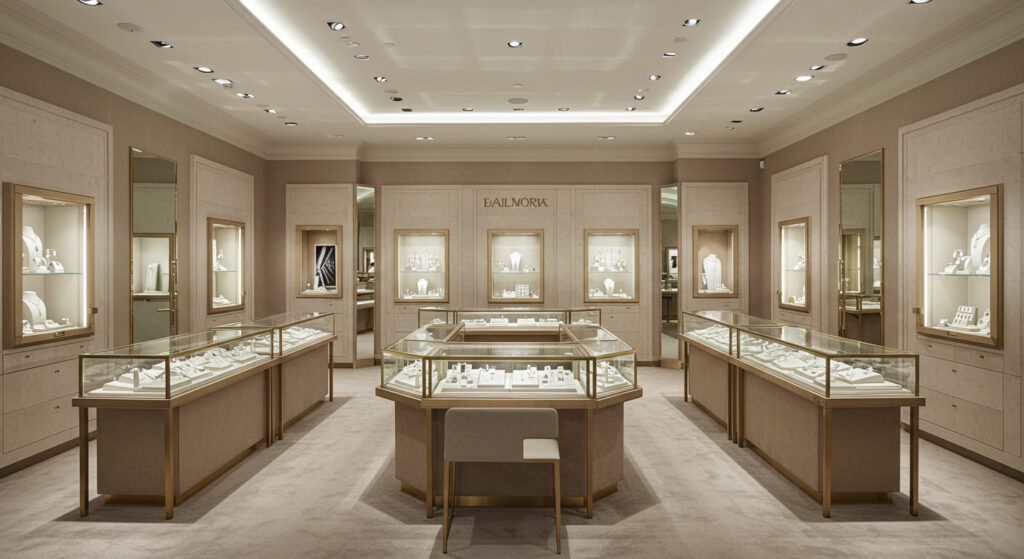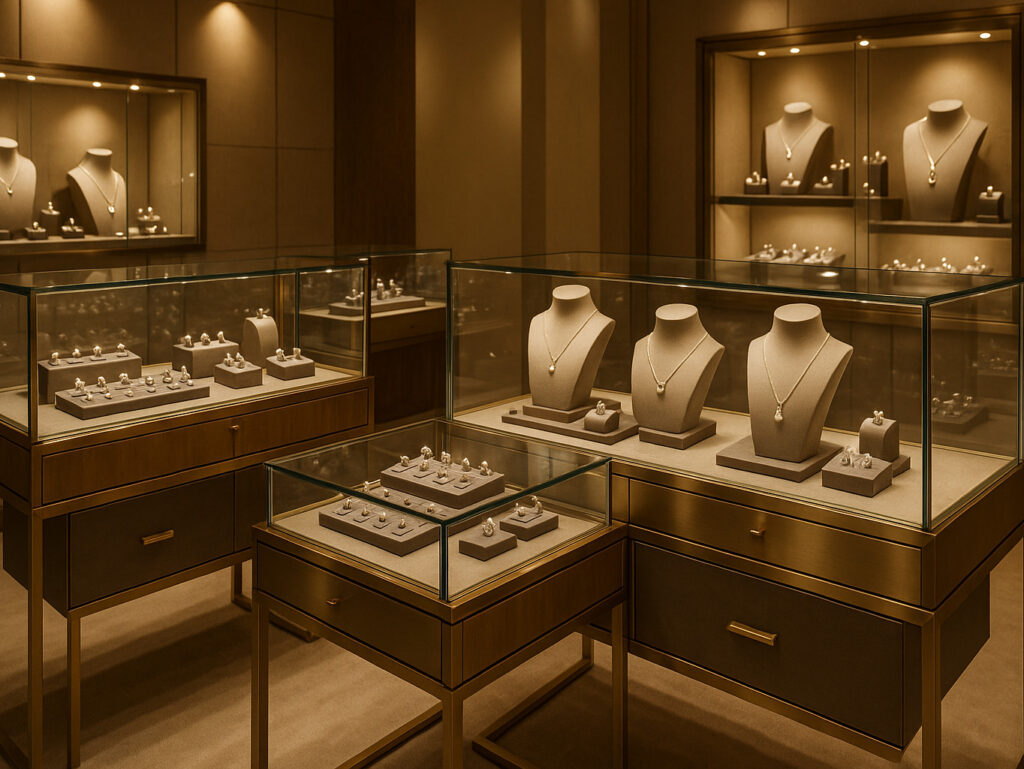Introduction: Materials Matter in Jewelry Retail
Jewelry is not just about sparkle—it’s about presentation. A beautifully crafted ring or necklace can lose its allure if placed in a poorly designed display. That’s why choosing the right materials for your jewelry fixtures is just as important as the lighting or layout of your store. As a shopfitting manufacturer, we understand that the visual appeal, durability, and material harmony all play a role in the effectiveness of jewelry displays.
Let’s explore the most commonly used materials in jewelry display fixtures and the reasons they remain the industry standard.
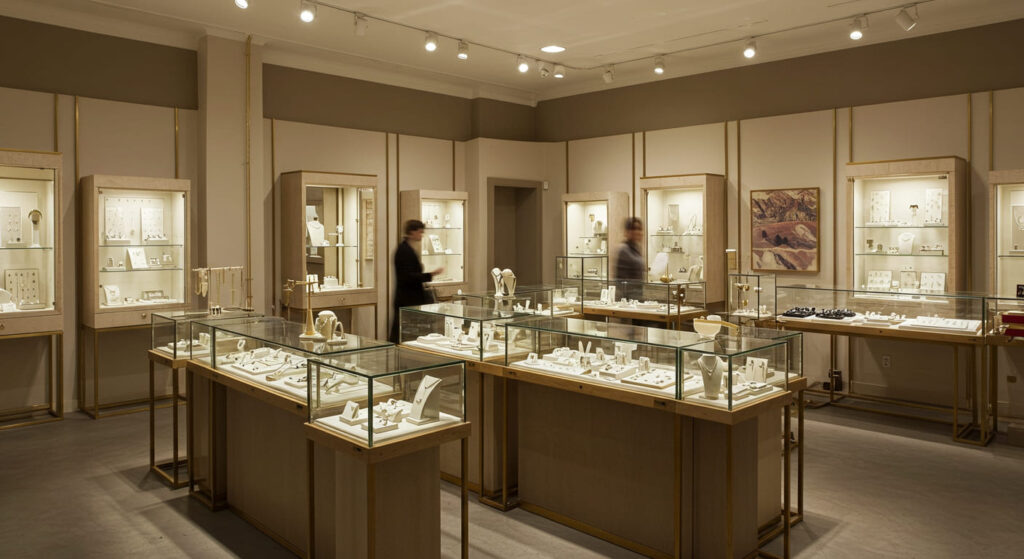
1. Glass: For Transparency and Elegance
Why it works:
Tempered glass is a staple in jewelry showcases for good reason—it offers maximum visibility, creates a clean and premium aesthetic, and doesn’t distract from the product. Its scratch-resistant and smudge-resistant properties (especially when coated) help maintain an elegant look even in high-traffic stores.
Best uses:
- Showcase counters
- Wall-mounted glass cases
- Display domes and risers
Pros:
✔ High transparency
✔ Easy to clean
✔ Adds a premium look
Cons:
✖ Needs regular polishing
✖ Fragile if not tempered
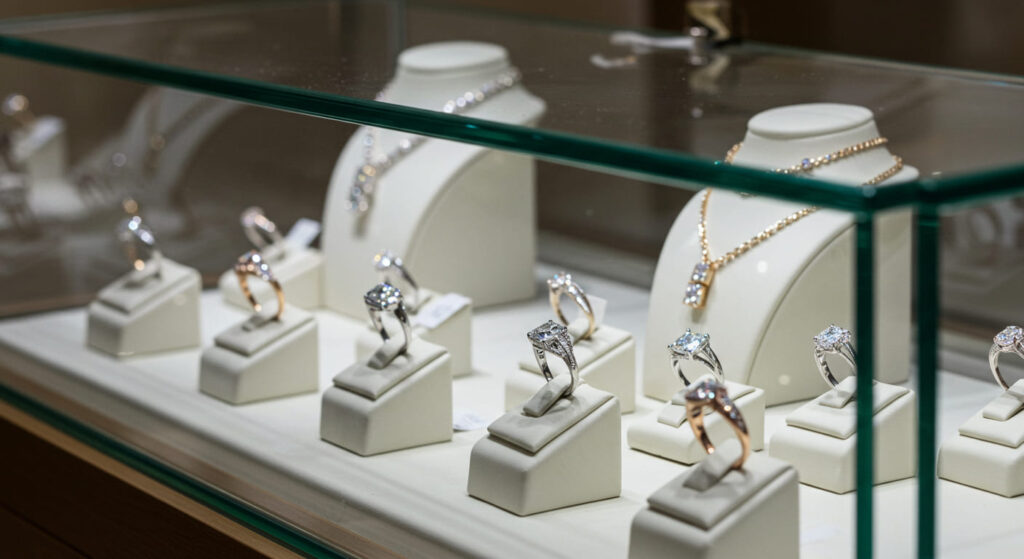
2. Velvet and Suede: For Soft Touch and Contrast
Why it works:
Velvet or suede-covered pads, inserts, and busts are commonly used to cradle fine jewelry. These materials offer soft cushioning and create visual contrast, making gold, silver, and gemstones pop. Available in a wide range of colors, these fabrics let you match your brand’s palette while offering a luxurious feel.
Best uses:
- Ring trays
- Necklace busts
- Drawer liners
Pros:
✔ Enhances product contrast
✔ Adds tactile luxury
✔ Customizable color options
Cons:
✖ Can attract dust
✖ Needs regular vacuuming
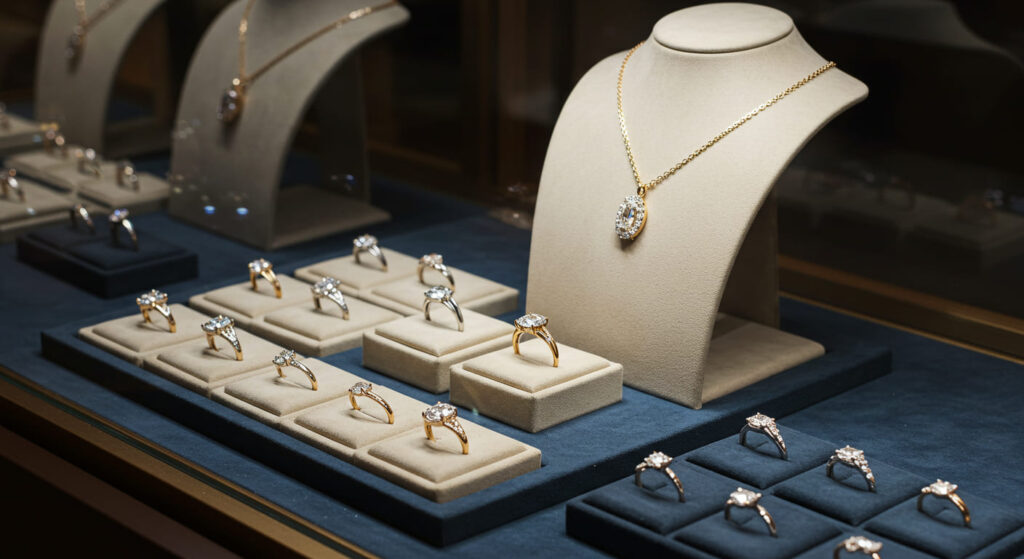
3. Metal: For Structure and Security
Why it works:
Metal—especially stainless steel, brass, and aluminum—is widely used in the framework of jewelry fixtures due to its structural strength and ability to hold locking mechanisms. Brushed or polished finishes offer aesthetic flexibility, from modern minimalism to classic luxury.
Best uses:
- Display frame structures
- Lockable drawer slides
- Accent trims
Pros:
✔ Durable and tamper-resistant
✔ Various finish options
✔ Compatible with lighting systems
Cons:
✖ Fingerprint-prone unless treated
✖ Heavier than alternative materials
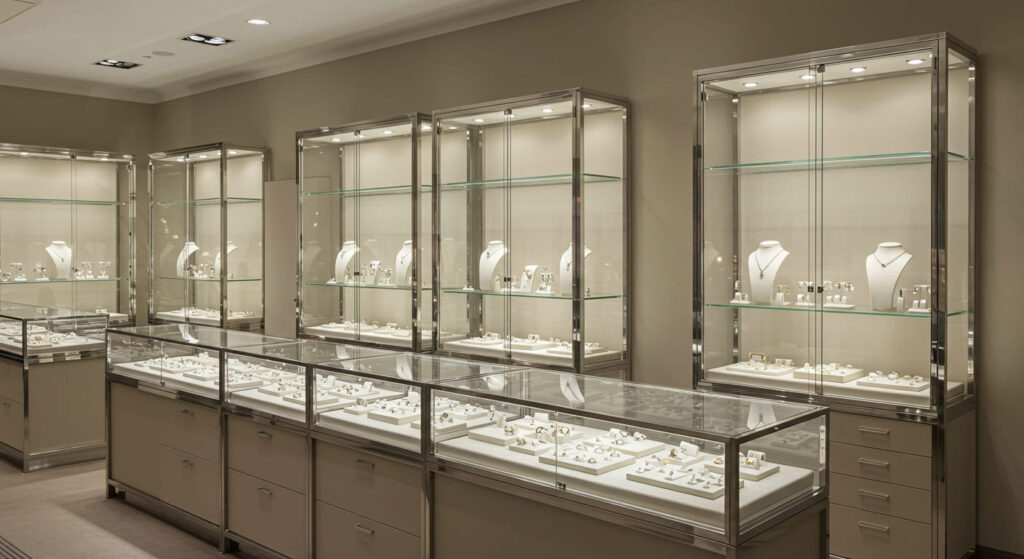
4. Wood: For Warmth and Branding
Why it works:
Wood adds a sense of warmth, craftsmanship, and richness. Whether it’s solid wood, veneer, or engineered MDF, wood elements offer endless customizability. From oak to walnut, finishes can be chosen to reflect a brand’s identity, whether rustic or refined.
Best uses:
- Drawer fronts
- Shelving units
- Integrated cabinetry
Pros:
✔ Visually warm and inviting
✔ Strong branding element
✔ Works well with mixed materials
Cons:
✖ Susceptible to scratches
✖ Needs sealing against humidity
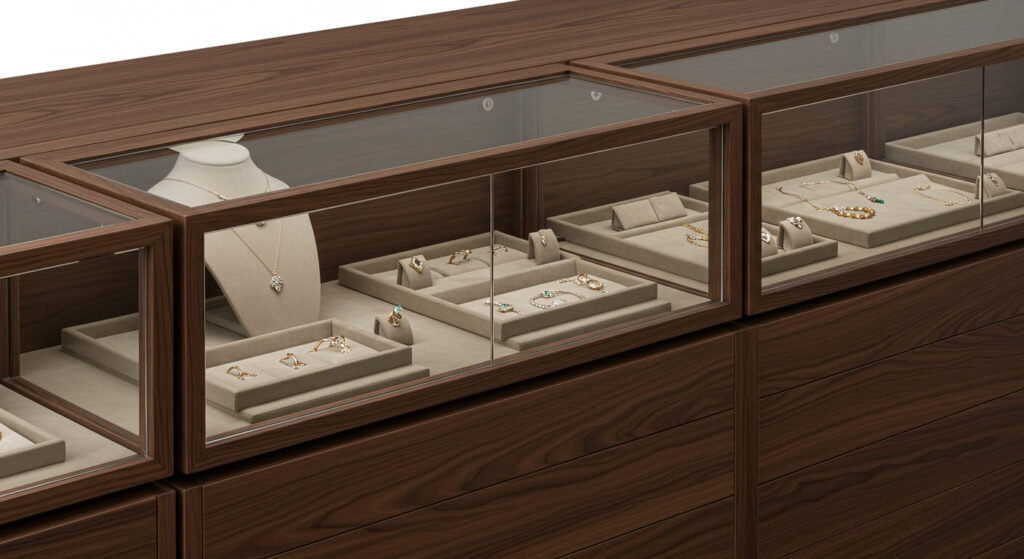
5. Faux Leather and PU: For Modern Simplicity
Why it works:
Faux leather or polyurethane (PU) finishes give display trays and surfaces a clean, professional look with excellent durability. These are especially useful in high-touch retail areas where real leather might not be practical.
Best uses:
- Display pads
- Rotating trays
- Drawer compartments
Pros:
✔ Easy to clean
✔ Cost-effective alternative to real leather
✔ Consistent texture
Cons:
✖ Can wear over time
✖ Less breathable than natural materials
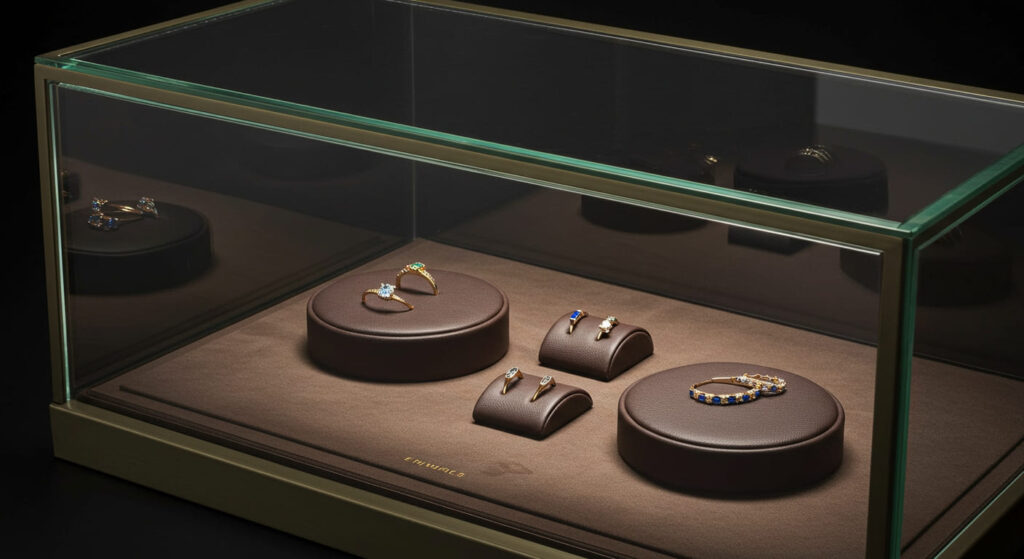
Combining Materials for Maximum Effect
In most professional jewelry stores, a blend of materials achieves the best result. For example, a showcase might combine:
- A glass top for visibility
- Velvet pads for ring trays
- A wood base for warmth
- Metal frames for support
- PU leather drawer fronts for durability
This layered approach ensures that function and form meet retail performance, while giving each piece of jewelry the attention it deserves.
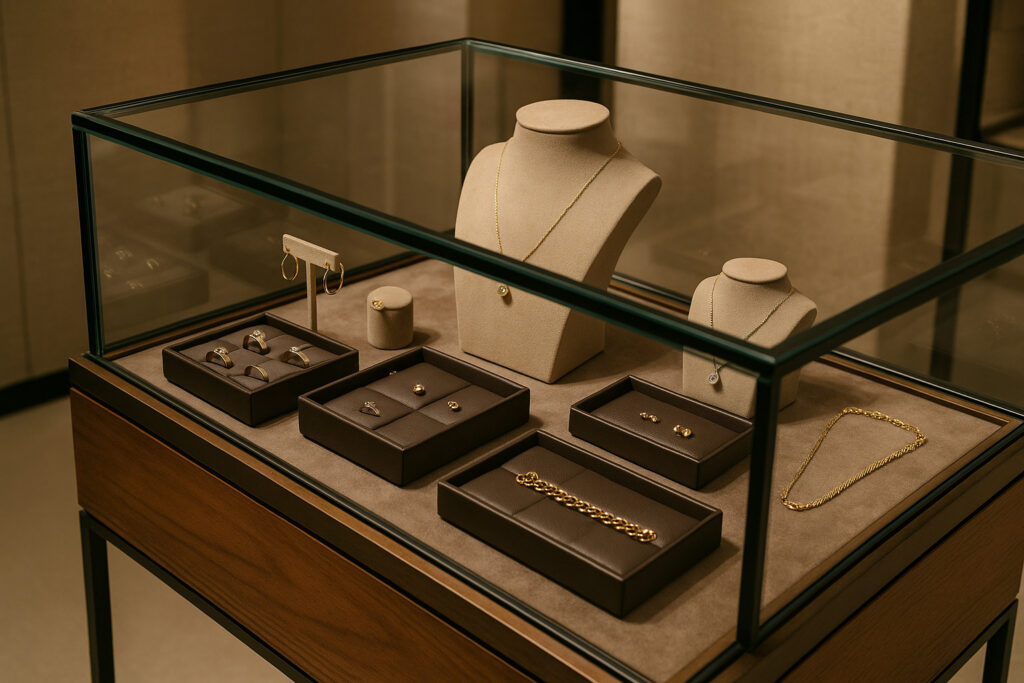
Working with Professional Shopfitters
Choosing the right material isn’t just a design decision—it’s a technical and logistical one. At WeiLin, we help clients assess:
- Weight tolerances of shelving
- Security needs for high-value items
- Material compatibility with lighting systems
- Ease of maintenance for staff
- Brand consistency across multiple locations
By customizing your jewelry display fixtures using the right mix of materials, you don’t just showcase products—you elevate your entire retail environment.
Conclusion: Invest in Material, Impress with Design
Every detail in jewelry presentation matters—from lighting and layout to, most importantly, materials. Whether you’re building a flagship boutique or upgrading a display counter, choosing the right materials can mean the difference between a customer walking by… or stepping in to make a purchase.
Want guidance on choosing materials for your next jewelry display project? Let us help you craft custom fixtures that reflect your brand and highlight your product—flawlessly.
